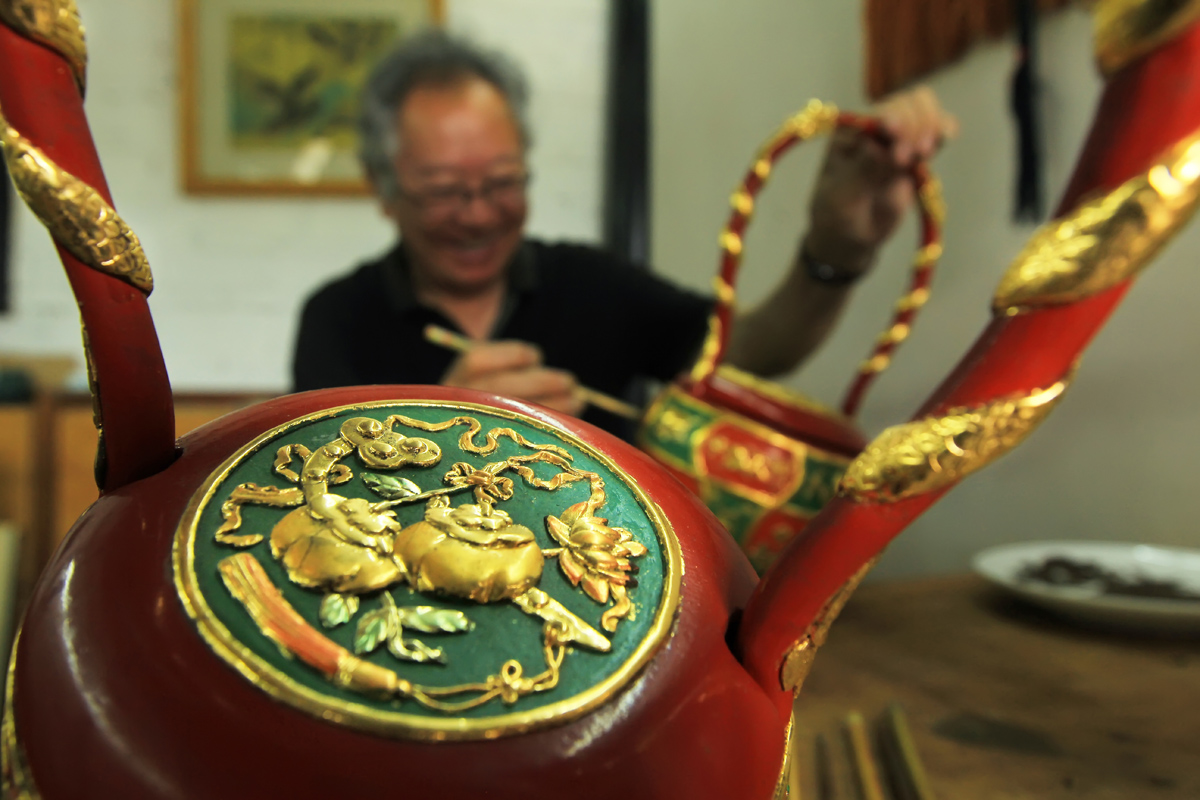Vermeil Gold and Lacquer Wood Carving
Ningbo vermeil gilt woodcarving has a history of more than 1,000 years. In the Han Dynasty (206BC-AD 220), with the development of timber construction, a kind of woodcarving decorated with painted lacquer and gold-overlaid became popular. In 759 AD, a Buddhist monk Jian Zhen and his disciples built a temple named Zhaoti in Japan adorned with vermeil gilt woodcarving decorations, similar to Ningbo’s King Asoka Temple in decoration style.
Camphor wood, basswood and ginkgo were often used to make vermeil gilt woodcarving products. After those wood materials were processed into relief sculptures and alto-relievo, the wooden products would then be painted and gilded.

Vermeil Gold and Lacquer Wood Carving artwork [Photo provided to chinadaily.com.cn]
The characters of the carved figurines mostly originate from Peking Opera. The proportions of the carving subjects are often opposite to that of traditional Chinese pictures. In the pictures of Ningbo vermeil gilt woodcarving, persons and horses are bigger than buildings.
Ningbo vermeil gilt wood carving techniques have been applied to daily items since the Ming (AD 1368-1644) and Qing (AD 1644-1911) dynasties, such beds or sedan chairs used in weddings and other festive occasions. Wooden boats and pavilions made for religious and celebratory occasions are also well known as elaborate works of this Chinese folk art tradition.
With the changing of folk customs, woodcarving has been fading away, although this technique is sometimes still used today in making the pseudo-classic furniture.

 Ningbo seabird project seeks international volunteers
Ningbo seabird project seeks international volunteers  Jakub's journey: From shipyard to sea
Jakub's journey: From shipyard to sea  Badminton Asia COO applauds Ningbo
Badminton Asia COO applauds Ningbo 


